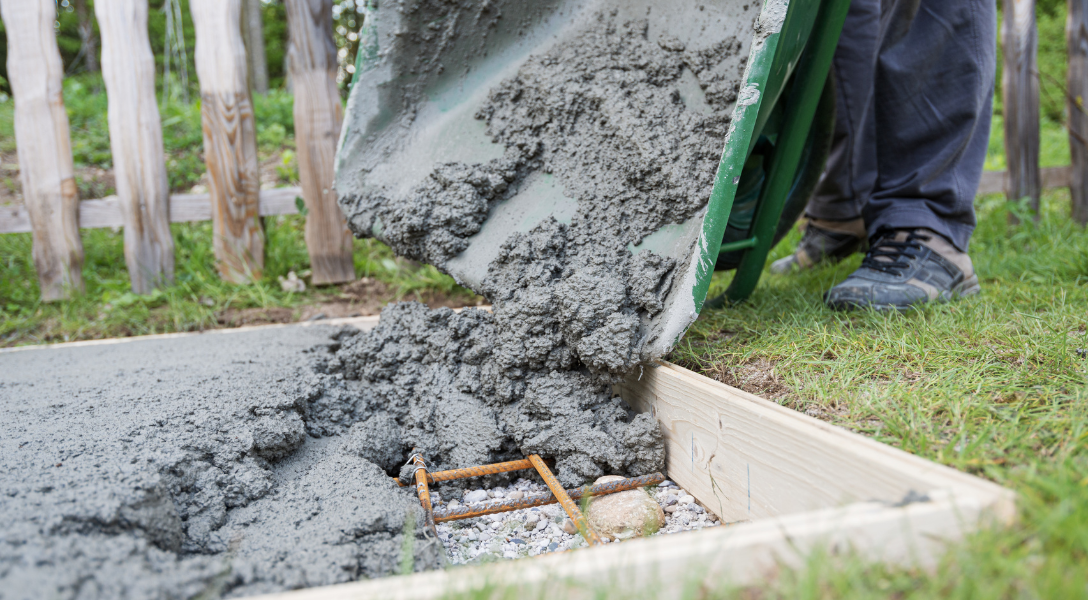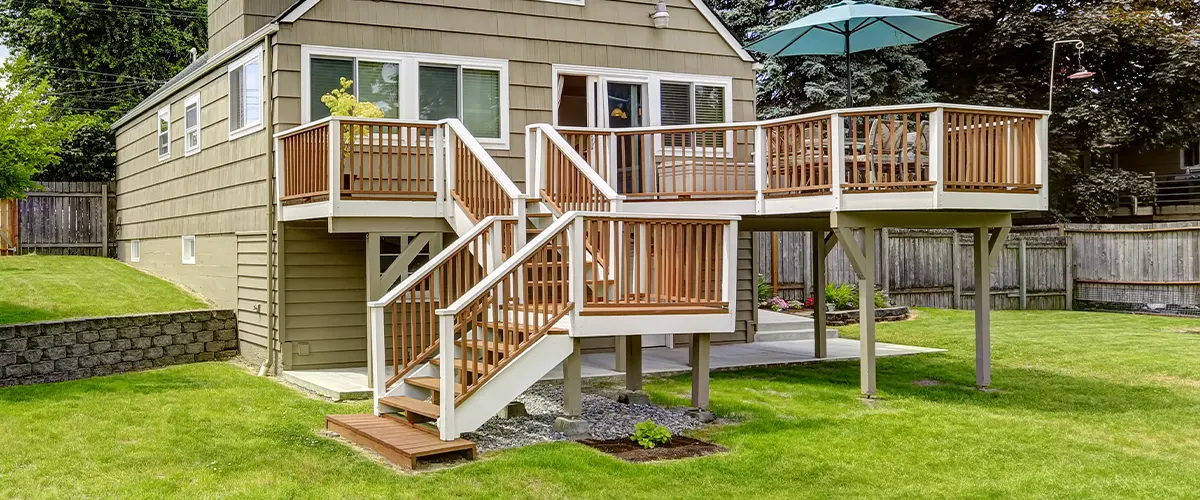Picking the Right Deck Footings for Security and Durability
When it comes to developing a deck, among the most important choices you will make is selecting the right grounds for security and sturdiness. The longevity and safety of your deck depend greatly on the kind of grounds you choose, as they give the necessary support and stability to stand up to the examination of time. With a myriad of options offered, it can be overwhelming to determine which footings are best matched for your details requirements. In this conversation, we will check out the different sorts of deck footings, think about the important variables to weigh when making a decision, and explore the advantages and disadvantages of different alternatives. By the end, you will certainly have a more clear understanding of the choices handy and be much better furnished to make an educated decision for your deck job.
Sorts Of Deck Footings
These footings consist of a round opening filled up with concrete, which gives a solid foundation for the deck messages. Concrete pier grounds are reasonably easy to set up and supply excellent security, making them a preferred option for many deck tasks.
One more kind of ground is the helical pile footing. Helical heaps are steel shafts with helical plates affixed to them. These footings are set up by screwing them right into the ground, which develops a protected structure for the deck. Helical pile footings are perfect for locations with difficult dirt conditions, as they can be mounted in nearly any kind of sort of dirt. They additionally permit simple modification and leveling of the deck if required.
Conversely, some home builders opt for precast concrete grounds. These footings are made of long lasting concrete and be available in various forms and sizes to suit different deck layouts. Precast concrete footings are convenient to install and give a steady base for the deck framework.
Lastly, another choice is the post-in-anchor ground system. This type of footing includes driving a steel anchor right into the ground and connecting it to the deck blog post. It provides versatility in regards to positioning the deck posts and is ideal for decks with lightweight frameworks.
When picking the appropriate type of deck ground, it is vital to take into consideration elements such as dirt conditions, deck tons, and neighborhood building codes (Deck Footings). Consulting with a specialist contractor or structural designer can help ensure the proper footing is selected for a secure and stable deck
Factors to Take Into Consideration When Choosing Footings
When choosing the proper footings for a deck, it is important to carefully think about different variables such as dirt conditions, deck tons, and adherence to regional building ordinance. These elements play a significant duty in making sure the security and sturdiness of the deck framework.
The kind of dirt on which the deck will certainly be developed establishes the type of footings required. On the other hand, decks developed on clay or extensive soils may call for footings that can fit the soil's tendency to broaden and agreement.
One more important variable is the deck lots. The weight of the deck, consisting of the materials made use of and any kind of potential online loads such as furniture or events, should be considered when choosing footings. go The grounds must be created to bear the weight of the deck and disperse it evenly to avoid any kind of architectural concerns or failures.
Finally, adherence to neighborhood building ordinance is critical. Building ordinance differ from region to region, and it is important to adhere to the particular demands established by the local authorities. Deck Footings. These codes make sure that the deck is built safely and fulfills the essential requirements for structural stability and load-bearing capacity
Concrete Grounds: Disadvantages and pros

When utilized as the foundation for a deck,Concrete footings provide numerous benefits and disadvantages. On the silver lining, concrete footings give exceptional stability and resilience. Concrete is a rigid and strong material that can sustain hefty loads and withstand different climate conditions. It additionally has a lengthy lifespan, making it a reliable option for long-lasting usage.
One more advantage of concrete grounds is their adaptability. They can be poured into various shapes and dimensions to suit numerous deck designs and arrangements. Concrete grounds can be customized to fit the details requirements and needs of the deck structure.
However, there are additionally some drawbacks to utilizing concrete footings. This can enhance the overall price of the deck job and might my explanation call for expert support.

Helical Piers Vs. Sonotubes: Which Is Much better?
In considering the structure choices for a deck, the comparison between helical piers and sonotubes is critical in establishing the superior selection. They are twisted right into the ground making use of hydraulic machinery, offering a secure and resilient structure for the deck.
When it involves stability and sturdiness, helical piers have the top hand. The helical plates on the piers create a solid hold with the dirt, changing or protecting against any kind of activity of the deck. This is specifically helpful in locations with unstable or changing dirt problems. Sonotubes, on the other hand, count entirely on the concrete filling up for security, which might not provide the very same level of strength and resistance.
In regards to installation, helical piers are reasonably easier and faster to mount compared to sonotubes. The hydraulic machinery made use of to twist the piers right into the ground ensures a effective and quick procedure. Sonotubes, on the various other hand, need excavating holes and pouring concrete, which can be labor-intensive and taxing.
In addition, helical piers are a more flexible choice. If required, they can be made use of in different soil conditions and can be changed or enhanced. Sonotubes, on the other hand, may require added assistance, such as rebar, in specific dirt problems or locations with high lots needs.
Choosing the Right Footings for Your Deck's Dimensions
For optimum architectural honesty, it is important to meticulously choose the suitable footings that align with the measurements of your deck. The dimensions of your deck, including its length, size, and height, play a substantial duty in identifying the kind and size of grounds required.
When picking grounds for your deck, it is essential to consider the load-bearing capability of the soil. The weight of the deck, incorporated with the weight of any furniture or individuals on it, puts in a significant force on the grounds (Deck Footings). Therefore, it is essential to choose footings that can sufficiently sustain this weight without sinking or changing with time.
The shapes and size of the grounds should also be thought about. Larger decks with higher measurements call for larger grounds to give adequate stability and support. The form of the grounds, whether they are rounded or square, depends upon the design and layout of the deck. In addition, the deepness at which the footings are mounted ought to be identified based on the frost line in your area to stop any kind of heaving or shifting due to freezing temperature levels.
Final Thought
In conclusion, choosing the appropriate deck grounds is critical for making certain security and sturdiness. Factors such as the kind of grounds, the deck's measurements, and the pros and cons of various choices should be taken into consideration.
These footings consist of a round hole loaded with concrete, which offers a strong structure for the deck blog posts. Concrete page pier grounds are relatively easy to set up and provide superb stability, making them a preferred option for several deck tasks.
Precast concrete footings are convenient to mount and supply a stable base for the deck framework.
It uses flexibility in terms of placing the deck articles and is suitable for decks with light-weight frameworks.
Concrete grounds supply a number of advantages and negative aspects when made use of as the foundation for a deck.
Comments on “Protect Foundations, Enduring Perceptions: Understanding the Art of Deck Footings Installment”